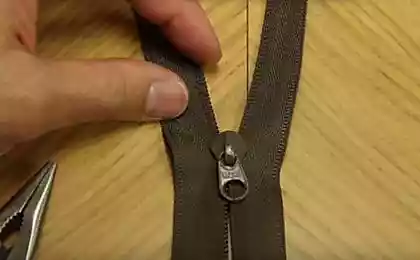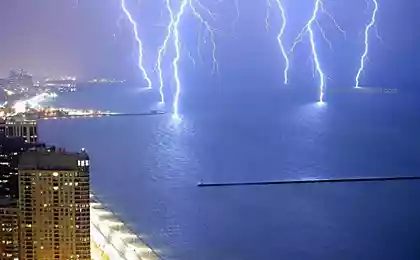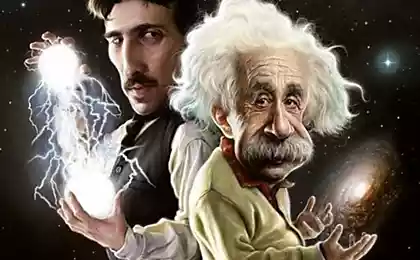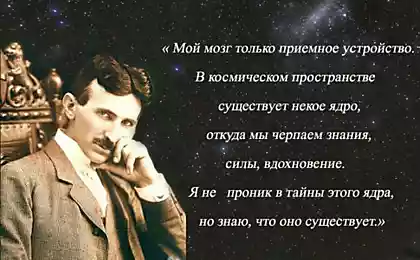1623
For the first time scientists were able to shoot a fireball on video and study its spectrum
Thunderball - an extremely rare natural phenomenon. For a long time the very existence of such lightning was in doubt. Get it in the laboratory until no one was able, a few photographs and videos taken by random eyewitnesses are too poor quality to be of scientific value.
January 17 in the journal «Physical Review Letters» was published article Chinese scientists, who managed the summer of 2012 shoot a fireball while observing conventional lightning on the Tibetan Plateau. Shooting is usually carried out color camera with a resolution of 640x480 and a high-speed black and white camera with a resolution 1280h400 and speed shooting at 3000 frames per second, as well as two gapless spectrometers.
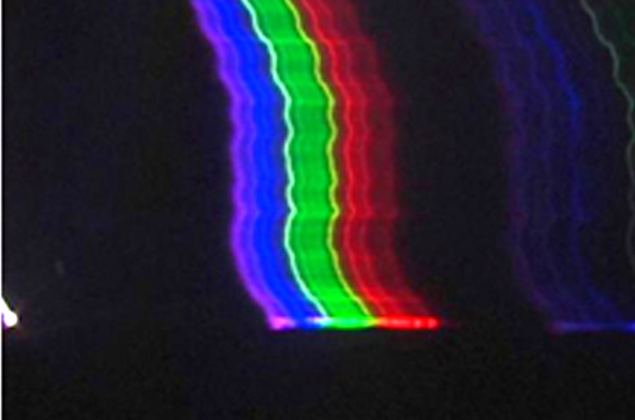
Bottom left - lightning itself. Right - its spectrum. In the middle and upper part of the frame - the usual range of linear lightning, which spawned the ball. I>
Thunderball was formed near the surface of the ground at impact than usual. Fireball lasted about 1 and 6 seconds, it was observed rate of 8, 6 m / s, and the apparent diameter - several meters. The actual speed could be higher, as the lightning could not move parallel to the plane of the camera. Survey was conducted from a distance of 900 meters, so that the image of lightning consists of only a few tens of pixels, but due to the presence of high-speed shooting and spectrometers, these frames give more information than all previous observations of ball lightning combined.
Throughout the lifetime of ball lightning in its spectrum are clearly visible lines of iron, silicon and calcium - the main components of the soil. Another very common element in the earth's crust, aluminum, radiate outside of the range, which is used by scientists perceive the camera so that it lines in the spectrum is not. It is possible to confirm the hypothesis New Zealand scientists, John Abrahamson and James Dinissa, who suggested that fireball - a cloud of heated oxidized nanoparticles soil, formed by the collision of ordinary lightning.
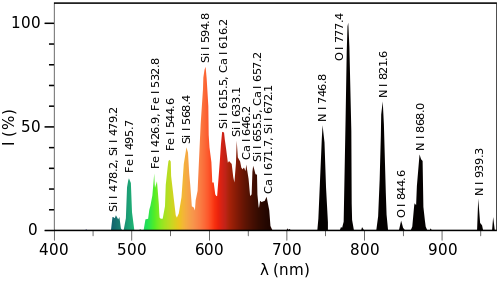
The range of ball lightning. On the left side - lines of iron, silicon and calcium in the right - the line of atmospheric oxygen and nitrogen i>
However, the only case of ball lightning using scientific equipment - is too small to draw any conclusions. It is possible that the fireballs come in different types, and are of different nature. Thus, there is evidence of lightning who watched Pilot far from the surface of the earth.
In the first moments of its existence, lightning glowed with a purple tinge, then its color became white, and in the end - orange. Interestingly, the luminescence intensity of lightning pulsed at a frequency of 99 Hz 4. At 20 meters from the lightning passes power line voltage of 35 kV, and this ripple, most likely due to the interaction of lightning electromagnetic field with a field transmission line current which has a frequency of 50 Hz.
Source: habrahabr.ru/post/210620/
January 17 in the journal «Physical Review Letters» was published article Chinese scientists, who managed the summer of 2012 shoot a fireball while observing conventional lightning on the Tibetan Plateau. Shooting is usually carried out color camera with a resolution of 640x480 and a high-speed black and white camera with a resolution 1280h400 and speed shooting at 3000 frames per second, as well as two gapless spectrometers.

Bottom left - lightning itself. Right - its spectrum. In the middle and upper part of the frame - the usual range of linear lightning, which spawned the ball. I>
Thunderball was formed near the surface of the ground at impact than usual. Fireball lasted about 1 and 6 seconds, it was observed rate of 8, 6 m / s, and the apparent diameter - several meters. The actual speed could be higher, as the lightning could not move parallel to the plane of the camera. Survey was conducted from a distance of 900 meters, so that the image of lightning consists of only a few tens of pixels, but due to the presence of high-speed shooting and spectrometers, these frames give more information than all previous observations of ball lightning combined.
Throughout the lifetime of ball lightning in its spectrum are clearly visible lines of iron, silicon and calcium - the main components of the soil. Another very common element in the earth's crust, aluminum, radiate outside of the range, which is used by scientists perceive the camera so that it lines in the spectrum is not. It is possible to confirm the hypothesis New Zealand scientists, John Abrahamson and James Dinissa, who suggested that fireball - a cloud of heated oxidized nanoparticles soil, formed by the collision of ordinary lightning.

The range of ball lightning. On the left side - lines of iron, silicon and calcium in the right - the line of atmospheric oxygen and nitrogen i>
However, the only case of ball lightning using scientific equipment - is too small to draw any conclusions. It is possible that the fireballs come in different types, and are of different nature. Thus, there is evidence of lightning who watched Pilot far from the surface of the earth.
In the first moments of its existence, lightning glowed with a purple tinge, then its color became white, and in the end - orange. Interestingly, the luminescence intensity of lightning pulsed at a frequency of 99 Hz 4. At 20 meters from the lightning passes power line voltage of 35 kV, and this ripple, most likely due to the interaction of lightning electromagnetic field with a field transmission line current which has a frequency of 50 Hz.
Source: habrahabr.ru/post/210620/
Blown and receives electricity
If you can not love yourself, you can not love anyone else in the world.




